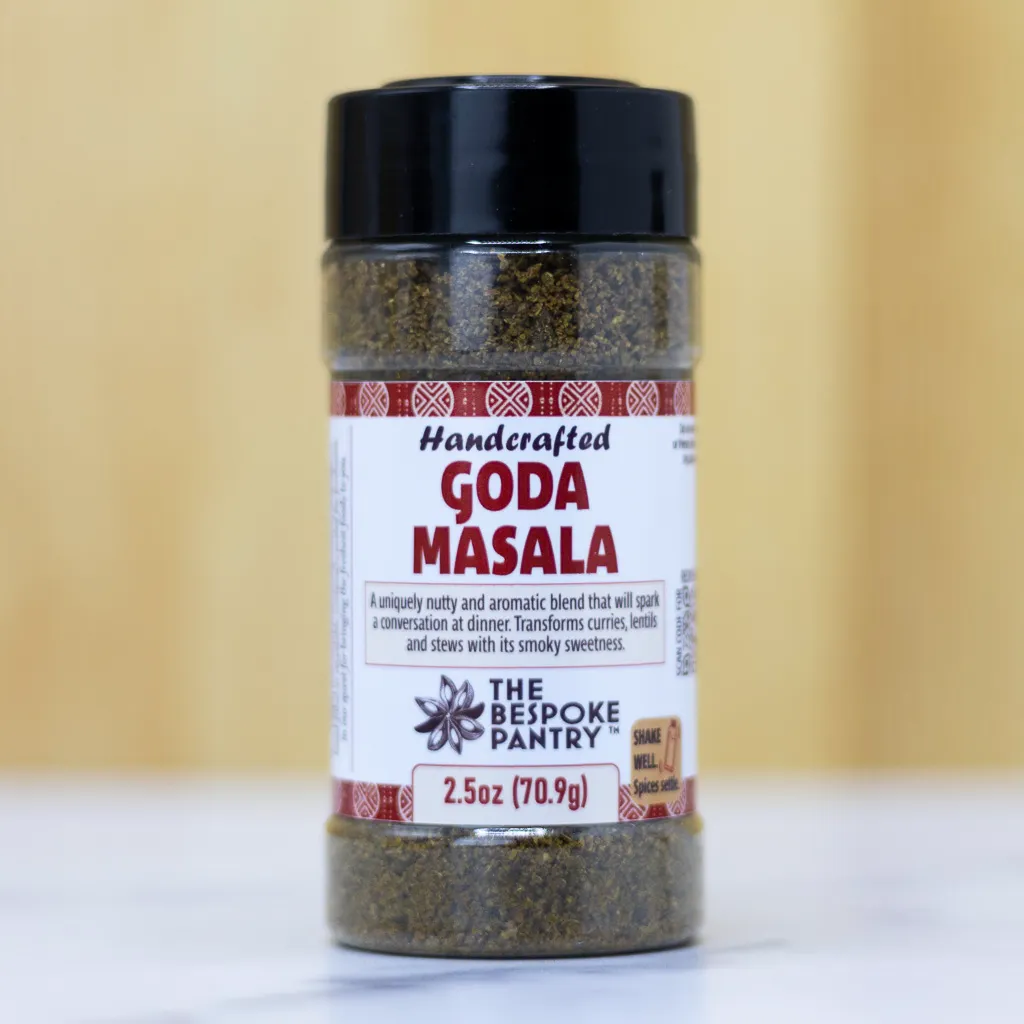HAPPY HOLIDAYS !
Our family business will be closed from 29-Nov until 31-Dec so our team can enjoy the festive season with their loved ones. We will reopen on 01-Jan-2026. We apologize for any inconvenience and appreciate your understanding.
Wishing you a joyous holiday season,
Ingredients:
Coriander, Dried Coconut, Sesame Seed, Cumin, Caraway Seed, Asafoetida, Cloves, Parmelia Perlata, Turmeric, Cinnamon, Fenugreek Seed, Chili Pepper, Bay Leaf.
About Goda Masala
Work this nutty and aromatic spice blend into curries, lentils and stews for the next dinner you host, and it might spark a conversation, with everyone asking ask what it is. Goda Masala is such a unique and complex blend that it cannot be replaced with any other combination of spices. Individual roasting of all the spices, way beyond the point that is usually considered the limit, brings out a smoky sweetness that is unique to this spice blend. A quintessential element of the Maharashtrian cuisine from India, our Goda Masala is handcrafted using a heirloom recipe.
How to use
- Transform curry lentils by adding a spoonful and bring the curry to a boil.
- Use this to marinate chicken, fish, lamb, beef steaks and cottage cheese like paneer.
- Mix with olive oil and use as a dip for warm crusty bread
- Rub onto lamb chops along with a little salt
Trivia & Tips
- A unique ingredient in Goda Masala is Parmelia Perlata or Parmotrema perlatum, commonly known as black stone flower. It is a species of lichen which does not have much taste or fragrance in its raw state. But when toasted, it releases a distinctive earthy, smoky flavor and aroma.
- Various types of lichen have been used in the past in different ways throughout the world like Iceland moss was an important human food in northern Europe, and was cooked as a bread, porridge, pudding, soup, or salad. Rock tripe is a lichen that has frequently been used as an emergency food. Lichens are also appearing on fine dining restaurant menus, especially around Scandinavia and the UK.
- Recipes using Goda Masala usually also call for the use of a souring agent, such as tamarind paste, and sugar or jaggery for sweetening.
